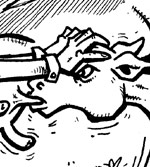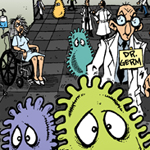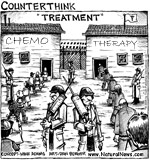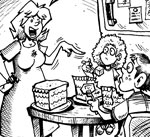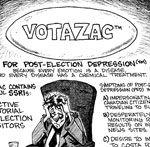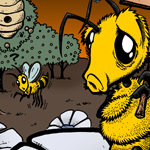Eat for Health: An Easy-to-follow Diet to Good Health for Non-vegetarians
| Share on Facebook | Share on Twitter | Share on Google+ |
What's the gist of Eat for Health? When Dr. Joel Fuhrman's Eat to Live came into the market, it changed the way people do their diets. They found out that shifting to vegetarianism or a diet strictly all about fruits and vegetables doesn't have to be as difficult as it may seem.
In fact, it's been adapted by thousands of people all over the world, including the legendary Alanis Morissette. Ever since she was on the diet, she lost more than 10 pounds and gained back her sense of vitality and energy.
Here's the problem, though: not everyone can be vegetarians. Eating nothing else but steamed broccolis and slices of fruits and vegetables doesn't sound appealing to others. There are also some who have no plans of going vegetarian, but they would like to keep themselves healthy and energized for most of the time. What diet would be perfect for them?
To answer this question, Dr. Fuhrman created Eat for Health.
What It Is All About
Eat for Health and Eat to Live books are almost similar in the sense that both promote a lot of intake of fruits and vegetables, using them as sources for your carbohydrates, vitamins, minerals, and even proteins. But there's also a huge difference: the program is all about progression. This means you go through different phases as a way of shifting yourself from a typical meat eater on a standard American diet (SAD) to a vegetarian, raw foodist, or a very health-conscious individual.
Here are some interesting points about the program. It believes that people lack the necessary nutrients. Because of such insufficiency, they end up overeating, or they cannot control their food addiction and food binging. Overeating leads to obesity. This then leads to several degenerative diseases, such as diabetes, cancer, and cardiovascular diseases.
The typical foods you eat are not the best source of these micronutrients. Individuals should learn how to decrease the consumption of foods with very low nutrients and immediately increase their consumption of high-nutrient meals. The diet is focused on what to eat to lose weight but also on how to eat healthy.
The plan introduces a unique points system for diet called MANDI Points. The points determine which foods have excellent nutrient density.
How to MANDI Points System Works
When you're in the plan, your goal is to reach 100 points. You are going to use the MANDI Points system chart as your guide. Of course, a very comprehensive list is available in his book.
You have to remember, though, that a pivotal approach of the plan is progression or phases. You just don't consume as many fruits and vegetables as you like. First phase is all about getting to know the importance of good eating habits. A step is perhaps incorporating three fruits in your daily breakfast.
Phase two is changing your mind-set about food, so you don't turn on meals when you're emotionally imbalanced. Moreover, by changing your thinking pattern, you can make more healthy eating choices. Third is all about learning the difference between real hunger and toxic hunger. The last phase aims to make the modifications you've made in the last three phases more consistent.
By the end of phase 4, you have learned how to derive 10 to 30 percent calories from seeds, raw nuts, and whole grains; up to 70 calories from half-cooked and half-raw vegetables; a single serving of oil and poultry every week; rare treats on processed foods and meat, etc.
Benefits of the Program
This program wouldn't be a success if not for its many benefits. The MANDI Points system makes it easier for you to combine fruits and vegetables. The book version is also accompanied by detailed menus you can follow for each of the phases. Non-vegetarians can still live a healthier, happier lifestyle like the vegetarians.
If they decide to go for vegetarianism or raw foodism, transformation would no longer be very difficult. The step-by-step progression allows you to step away from the conventional diet you're known for with relative ease.
The program is embraced or adapted by fitness enthusiasts—trainers, nutritionists, and even the very popular Weight Watchers. You become more conscious of what you eat. Moreover, there are great recipes you can follow.
Negative Reviews
There will always be criticism regardless of the diet plan. This one is not spared. Many say it somehow views taking snacks, albeit subtly, not ideal for dieters. For some, it's a good way to avoid overeating in the next meal. Others may still view the limitation as a form of fasting.
Changing radically your diet doesn't have to be too hard to stick to. You can begin with very simple steps. Be a part of the new movement by signing up at Eat For Health.
-
Skin CareMen Skin Care
-
Free ResourcesFree eBooks
-
The important thing is this: to be able, at any moment, to sacrifice what we are for what we could become.Maharishi Mahesh Yogi
-
-




